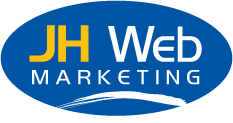 I hope the example in “Testimonial Power Part 2” helped you write a brand statement that can guide you in building a great set of testimonials. But there’s something else I should have mentioned in that post: the importance of audience research.
I hope the example in “Testimonial Power Part 2” helped you write a brand statement that can guide you in building a great set of testimonials. But there’s something else I should have mentioned in that post: the importance of audience research.
More to the point: Your brand statement should be based on more than your own “gut feeling” about which benefits of your product matter most to your target audience.
You need some real feedback from those people, who should be defined as specifically as possible. For our fictional Sunrise Rent-a-Car, the audience is not just “travelers” or “Central Florida visitors,” but “budget conscious families and business people visiting Central Florida”
The more your product is like those of your competitors (and chances are your offering is more like theirs than it is unlike), the more important it is to know how your specific audience prioritizes benefits. If your company is small and can’t afford to hire a research firm, at least do some online surveys.
Free, web-based tools like surveymonkey.com make it easier than ever to create and administer surveys, and even allow you to graph and analyze your survey results. Especially if you have a relatively small number (say, fewer than 100) customers and prospects willing to be surveyed, these online research providers can be an ideal solution.
The main point is to take what you learn from your research and use it in creating your brand statement. Others in your organization may feel a particular benefit has to be the star of the brand statement . . . but if you have the facts on your side, stick to them.
If your research shows that benefit X is by far the most important to your target audience, your brand statement should “lead with it” … and you know you’ll need more than one testimonial focused on it.
